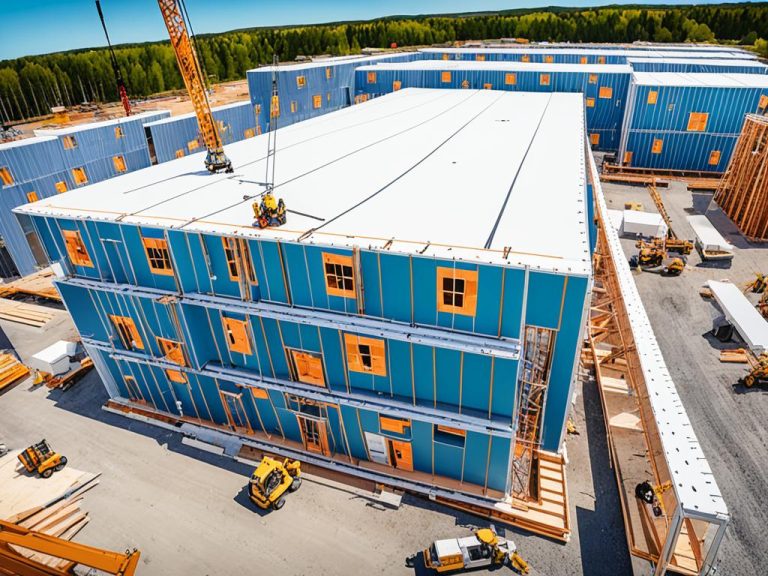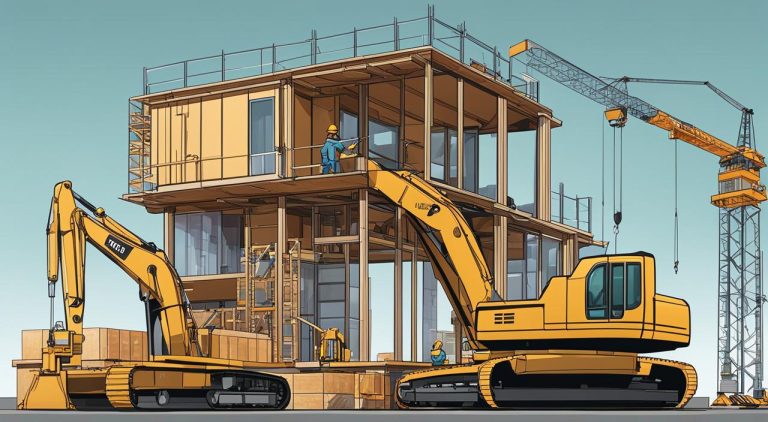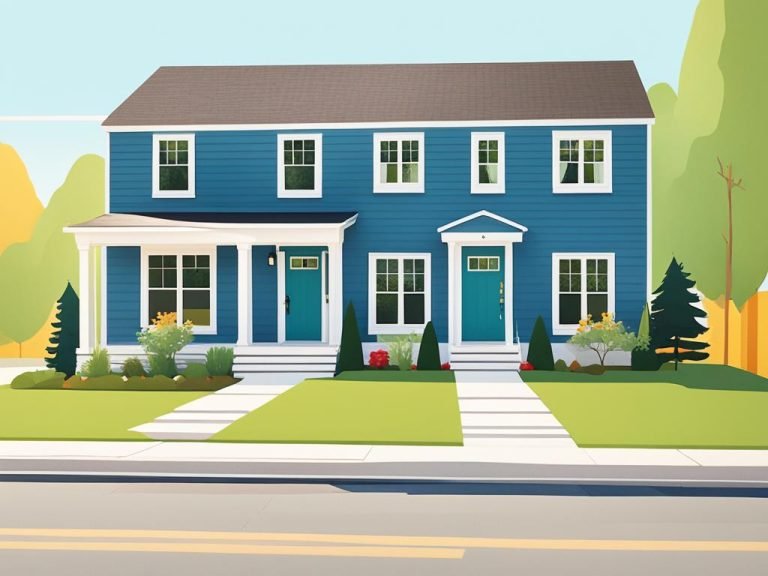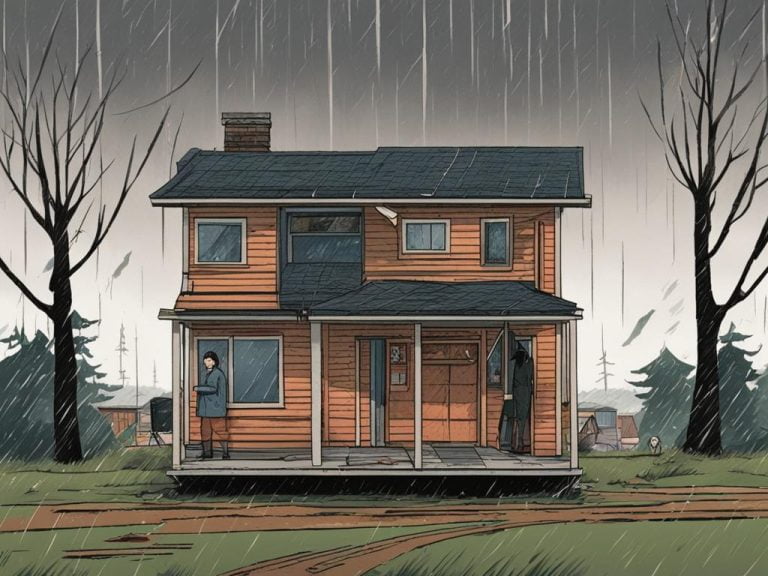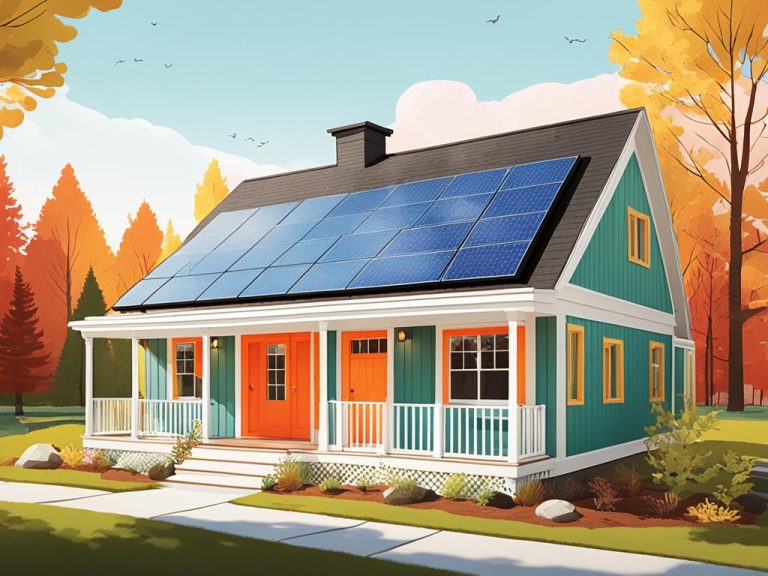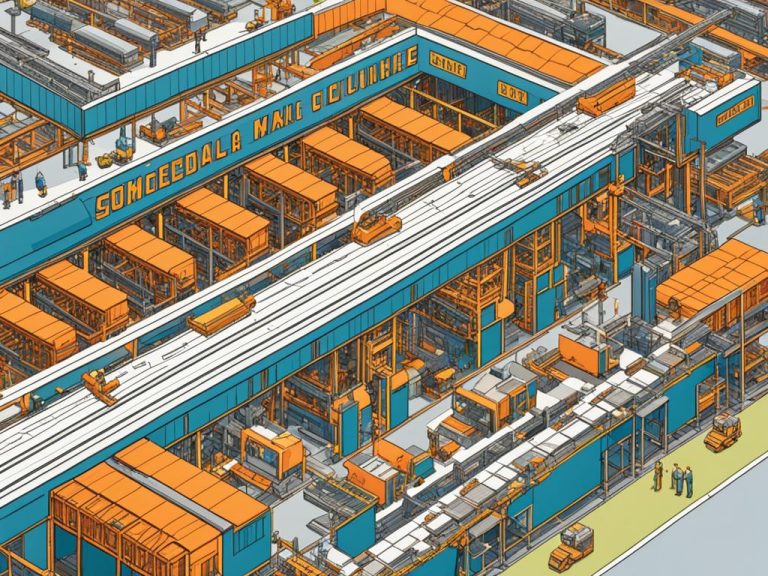Safety of Prefab Houses – Concerns Addressed
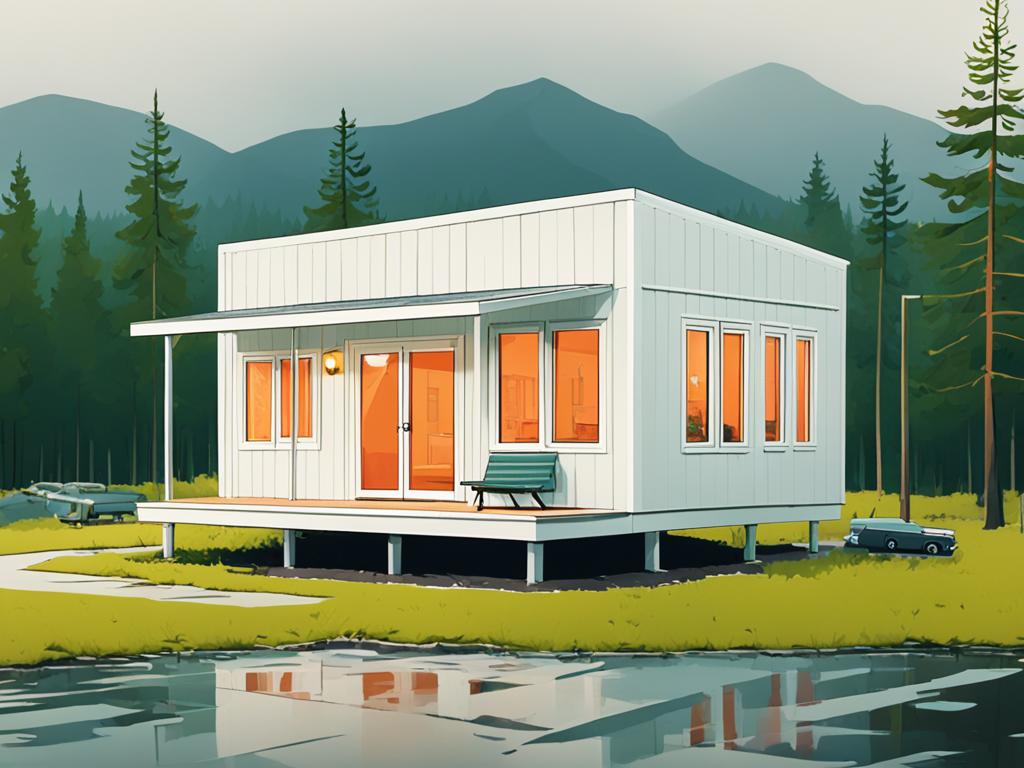
Concerns have been raised regarding the safety of prefab houses in the UK. These concerns primarily revolve around fire safety, structural integrity, and moisture-related risks. It is crucial to address these concerns and establish proper regulations to ensure the safety of prefab house construction.
A recent report on modern methods of construction (MMC) conducted by academics at Edinburgh Napier University and Harlow Consulting highlighted potential risks associated with volumetric modular construction, a popular method in prefab house construction. However, there are allegations that the government has suppressed this report to avoid negative publicity for the industry.
This article aims to shed light on the safety concerns related to prefab houses and emphasize the need for appropriate regulations and standards to ensure the construction of safe and secure homes.
Key Takeaways:
- Prefab houses in the UK have raised concerns about fire safety, structural integrity, moisture-related risks, and durability.
- A report on modern methods of construction (MMC) highlighted potential risks associated with volumetric modular construction.
- Proper regulations and building standards are necessary to address the safety concerns of prefab houses.
- Fire safety risks, structural integrity, and moisture-related issues need adequate attention in prefab house construction.
- Insurers and developers should work together to ensure appropriate insurance coverage for prefab houses.
Fire Safety Risks in Prefab Houses
The safety of prefab houses extends beyond structural integrity. Concerns about fire safety pose significant challenges in the construction and use of these modular homes. Fire chiefs have raised issues regarding the lack of comprehensive research and data on large-scale fire tests within the modular construction sector. This poses a potential risk to the occupants and the surrounding areas.
The construction method used in prefab houses, particularly the linking of volumetric boxes, can create substantial cavities that may not be adequately fire-stopped. This increases the risk of rapid fire spread within the building, endangering lives and property. It is crucial to address these fire safety risks to ensure the overall safety and well-being of prefab house occupants.
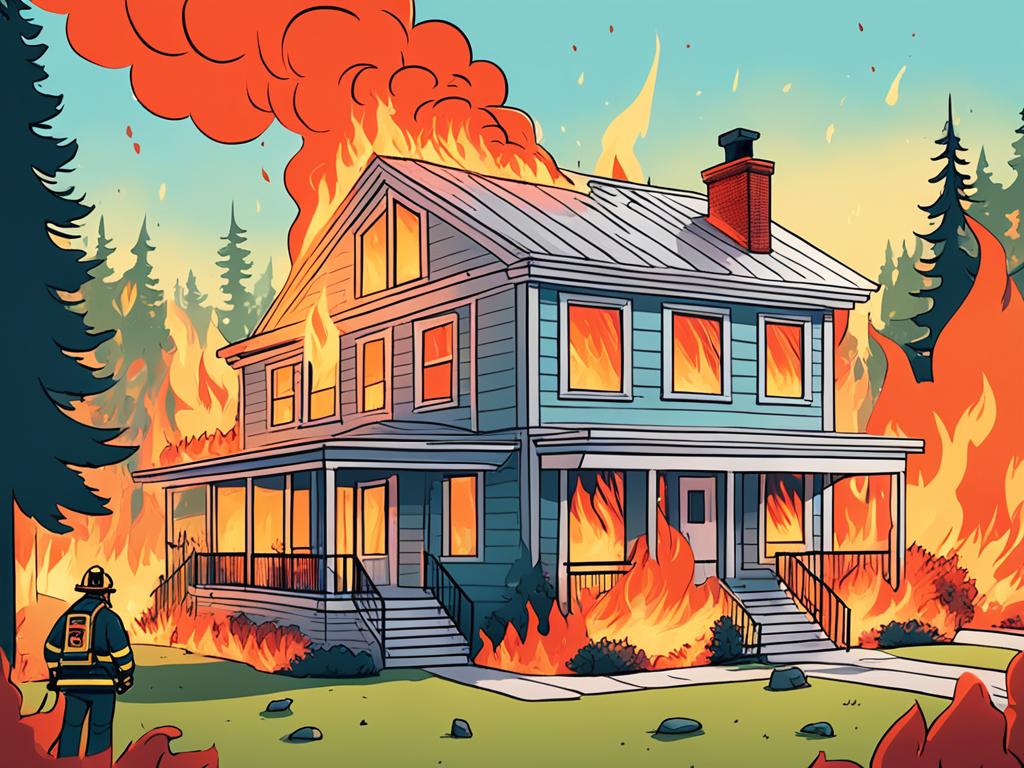
Real-life incidents have served as stark reminders of the fire safety risks associated with prefab houses. For example, fires at a hotel on the Shetland Islands and a modular development in west London have raised alarm bells within the industry, drawing attention to the urgent need for improved fire safety measures.
Structural Integrity of Prefab Houses
The structural integrity of prefab houses is a significant concern that the report on modern methods of construction (MMC) has highlighted. Experts have emphasized the risk of large cavities in the modular construction process, which may not be adequately addressed, potentially compromising the stability of the building.
It is essential to conduct proper research into the risks associated with new construction technologies to avoid repeating past mistakes in building safety. The report emphasizes the importance of regulating these technologies adequately and implementing stricter building regulations for prefab houses.

Moisture and Mould Risks in Prefab Houses
When it comes to prefab house construction safety, one crucial aspect that needs attention is the risk of moisture and mould. During the transportation of prefab units to the construction site, improper storage and handling can expose these units to moisture. This can result in dampness in the materials used, creating an environment where mould growth can flourish.
Mould growth can have serious implications for both the integrity of the structure and the health of the residents. Once mould starts developing, it can be challenging to remove completely and can cause respiratory problems and allergies. Therefore, it is imperative to address and mitigate the risk of moisture and mould in prefab houses to ensure the safety and well-being of those who will live in them.
To prevent the growth of mould, proper storage and transportation techniques should be implemented, ensuring that the prefab units remain dry and free from moisture exposure. Additionally, using moisture-resistant materials and proper ventilation systems can help minimize the risk of excessive moisture accumulation within prefab houses.
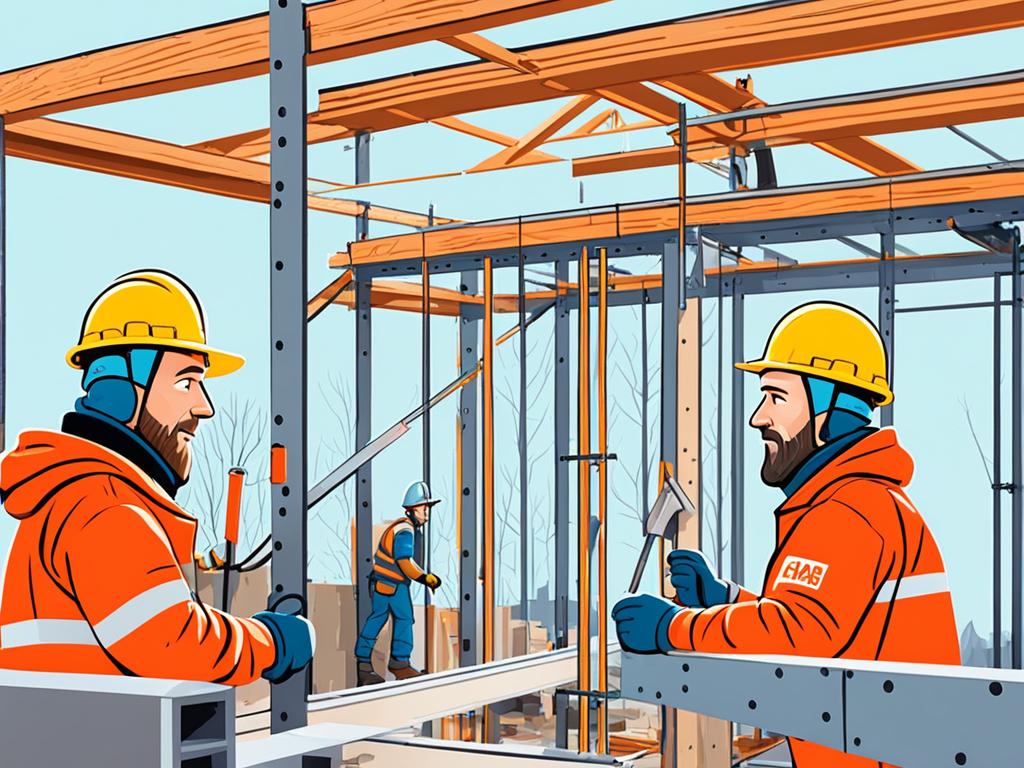
Durability of Prefab Houses
The durability of prefab houses has been a topic of discussion. While modular homes can be built quickly, they may not have the same lifespan as traditionally constructed homes. Prefab homes in the UK today are typically designed to last for 60 years, whereas masonry-built homes have a life expectancy of over 150 years.
This raises questions about the long-term durability of prefab houses and whether they can withstand the test of time. Homeowners need to consider the lifespan of their houses when making important decisions like mortgages and insurance coverage.
Insurers often assess the durability of homes before providing coverage. The shorter lifespan of prefab houses might raise concerns for insurers, as they prefer to cover homes that are built to last. This can affect the availability and cost of insurance options for prefab homeowners.
Homeowners should also consider the long-term value of their investment. While prefab houses offer cost-saving benefits and efficient construction processes, it is important to evaluate the potential resale value and market demand for these homes in the future.
Efforts are being made to improve the durability of prefab houses. Architects and engineers continue to innovate and develop new construction techniques and materials to enhance the longevity and resilience of modular homes.
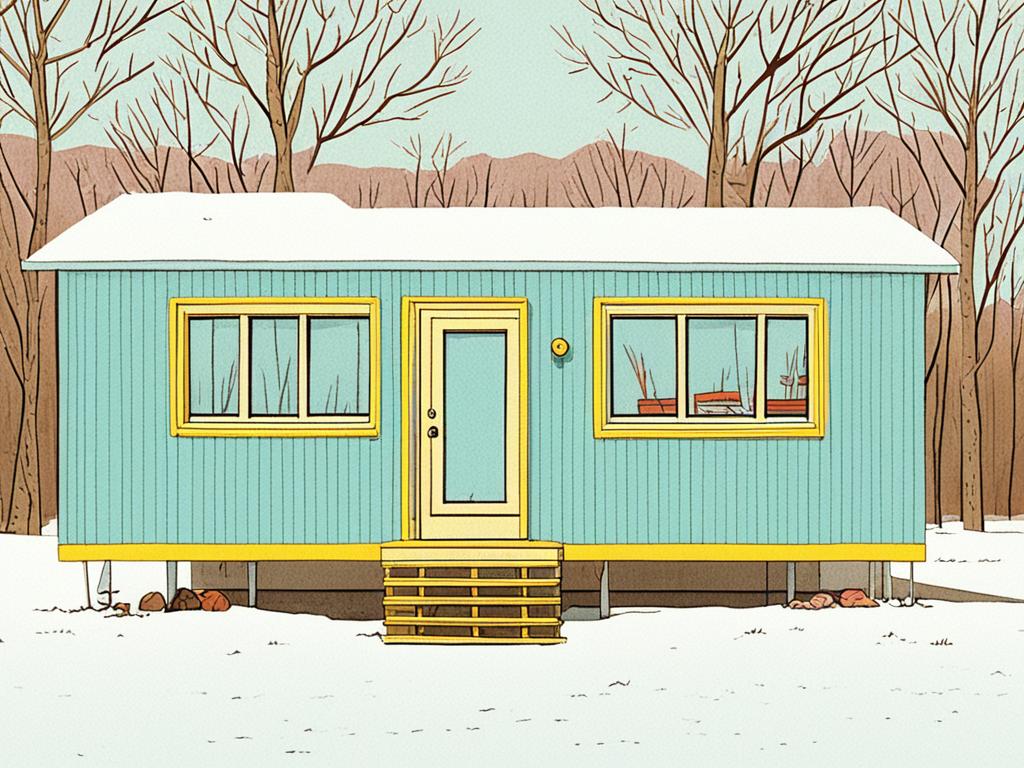
The Future of Prefab House Durability
- Ongoing research and development: Experts are continuously researching and testing materials, designs, and construction methods to improve the durability of prefab houses. This includes exploring advanced insulation materials, structural reinforcements, and weather-resistant finishes.
- Better understanding of maintenance and repairs: Homeowners and builders are learning more about the specific maintenance needs of prefab houses to ensure their longevity. Regular inspections and timely repairs are crucial in preserving the structural integrity and safety of these homes.
- Industry standards and regulations: The construction industry is working towards establishing stricter standards and regulations for prefab houses to ensure consistent quality and durability. This includes implementing thorough quality control measures during the manufacturing process and on-site construction.
By addressing these concerns and continuously improving the durability of prefab houses, homeowners can have increased confidence in the long-term stability and security of their homes.
Insurance Considerations for Prefab Houses
When it comes to providing coverage for prefab houses, insurers have specific concerns that need to be addressed. One of the key concerns is ensuring adequate fire safety measures for these structures. Insurers pay close attention to the types of insulation used and their fire rating, as this plays a crucial role in preventing and mitigating fire incidents in prefab houses.
Furthermore, insurers also take into consideration the accessibility of defective parts within modular units. Identifying and addressing any common defects that may arise in batches of units is essential to minimize potential risks and ensure the safety of prefab homeowners. Insurers also consider the timeframes for replacement units in case of damage or defects, as timely replacements are crucial for maintaining the security and functionality of prefab houses.
Additionally, company insolvency can create uncertainties for developers and impact insurance coverage. Insurers assess the financial stability of the developers and consider the potential risks associated with company insolvency. This ensures that the insurance coverage remains intact and provides the necessary protection for prefab homeowners.
It is important for insurers and developers to maintain open lines of communication and work together to address these concerns and provide appropriate insurance coverage for prefab houses. By ensuring that all necessary safety and security measures are in place, insurers can provide peace of mind to homeowners while developers can demonstrate their commitment to delivering high-quality, secure prefab housing.
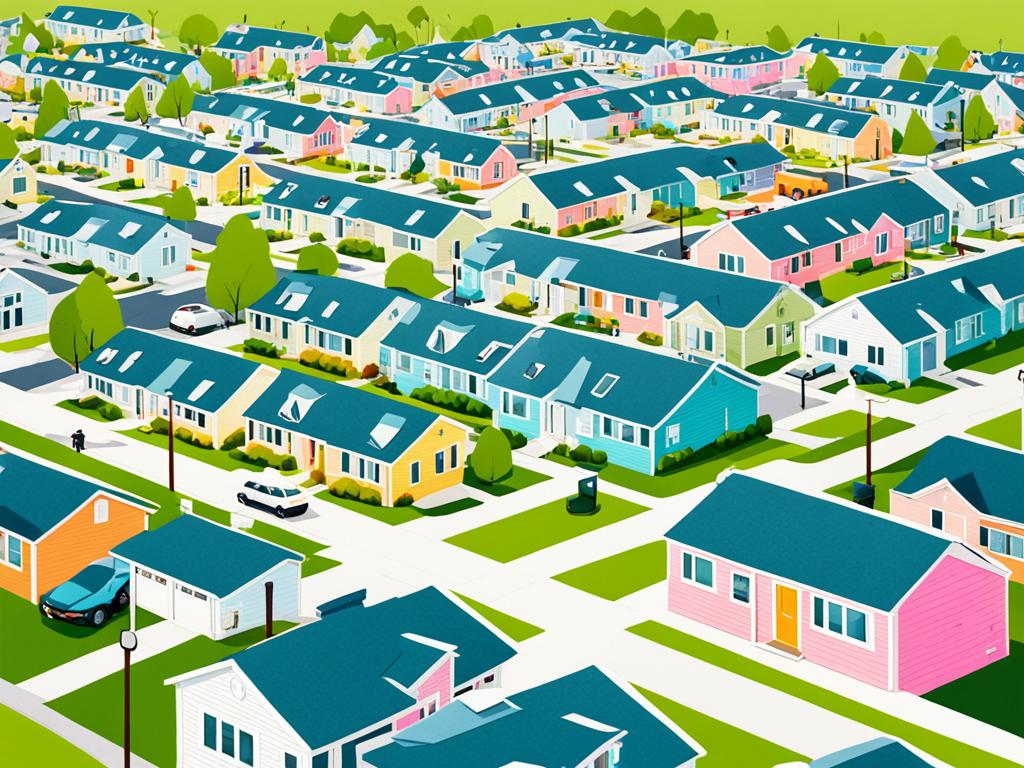
With these insurance considerations in mind, prefab houses can offer safe and secure housing options for individuals and families. It is crucial for all stakeholders involved to prioritize the implementation of proper safety measures and collaborate to ensure that prefab houses meet the necessary standards for a secure and well-protected living environment.
Conclusion
The safety of prefab houses is of utmost importance, considering aspects such as fire safety, structural integrity, moisture and mould risks, and long-term durability. While prefab houses offer potential cost savings and efficiency, it is crucial to address the concerns associated with their safety.
To ensure the safety of prefab houses, stricter building regulations and proper research are essential. It is necessary to regulate new construction technologies and bridge any existing gaps to prevent potential risks. By implementing these measures, we can ensure that prefab houses meet the required safety standards.
In addition, adequate insurance coverage tailored to the specific risks of prefab construction is vital. Insurers and developers need to collaborate and communicate effectively to address concerns related to fire safety, defective parts, and potential defects. This will ensure that homeowners have appropriate insurance coverage and peace of mind.
With proper measures and regulations in place, prefab houses can provide safe and secure housing options. By prioritizing the safety considerations and implementing the necessary precautions, prefab houses can continue to offer affordable and efficient housing solutions without compromising on the well-being and security of residents.
FAQ
Are prefab houses safe?
When properly regulated and constructed according to building regulations, prefab houses can be safe. However, concerns have been raised about fire safety, structural integrity, moisture and mould risks, and long-term durability.
What are the fire safety risks in prefab houses?
Fire safety risks in prefab houses include the lack of large-scale fire-test research, potential gaps in fire-stopping measures, and the risk of fire spreading quickly within the building due to large cavities.
What are the concerns about the structural integrity of prefab houses?
The concerns about the structural integrity of prefab houses include the risk of large cavities not being properly addressed, potentially compromising the stability of the building.
What are the moisture and mould risks in prefab houses?
Improper storage and transportation during the construction process can lead to dampness in the materials used, increasing the risk of mould growth. Mould growth can have serious health implications.
What is the durability of prefab houses?
Prefab houses are typically designed to last for 60 years in the UK, whereas masonry-built homes have a life expectancy of over 150 years. This raises questions about the long-term durability of prefab houses.
What are the insurance considerations for prefab houses?
Insurers have specific concerns regarding fire safety measures, accessibility of defective parts, common defects, timeframes for replacement units, and company insolvency. Proper communication and addressing these concerns are important for appropriate insurance coverage.
What is the conclusion about the safety of prefab houses?
Proper regulations, stricter building regulations, and research on new construction technologies are necessary for ensuring the safety of prefab houses. With the right measures and regulations in place, prefab houses can provide safe and secure housing options.
Source Links
- https://www.hhcelcon.co.uk/news/could-move-prefabrication-have-unintended-consequences
- https://global.lockton.com/gb/en/news-insights/addressing-insurer-concerns-regarding-modular-construction
- https://www.insidehousing.co.uk/news/government-accused-of-suppressing-report-into-safety-of-modular-building-83263

